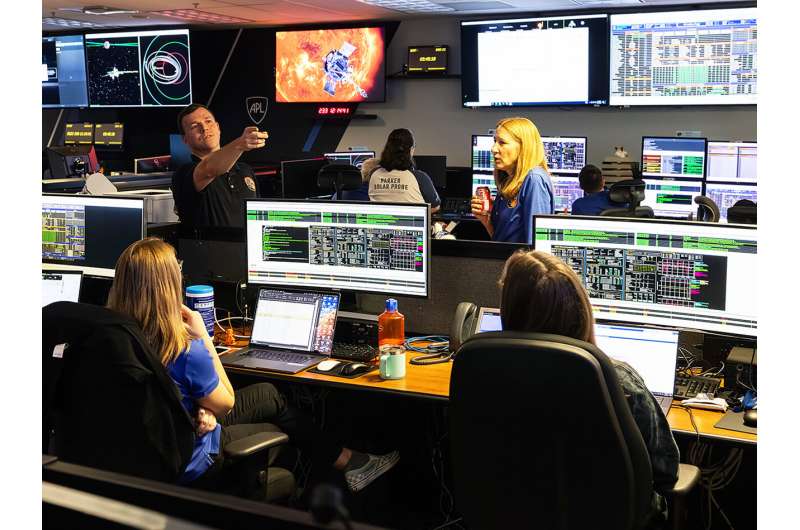This article has been reviewed according to Science X's editorial process and policies. Editors have highlighted the following attributes while ensuring the content's credibility:
fact-checked
trusted source
proofread
Venus flyby sends Parker Solar Probe toward record-setting flights around the sun

NASA's Parker Solar Probe zoomed past Venus on Aug. 21, using the planet's gravity to aim toward a record-setting series of flights around the sun that start next month.
At just before 8:03 a.m. EDT, moving approximately 15 miles (more than 24 kilometers) per second, Parker Solar Probe passed 2,487 miles (4,003 kilometers) above the Venusian surface as it curved around the planet toward the inner solar system. The mission operations team at the Johns Hopkins Applied Physics Laboratory (APL) in Laurel, Maryland, kept in contact with the spacecraft during the flyby through NASA's Deep Space Network—except for an expected 8 minutes at closest approach, when Venus was between Earth and Parker—and determined the spacecraft was on course and operating normally.
"Parker Solar Probe remains on track to make its closest flybys yet of the sun," said Nick Pinkine, Parker Solar Probe mission operations manager from APL. "Parker's success is a tribute to the entire mission team, but I'm especially proud of the mission operators and the job they've done over the past five years to ensure the flawless operation of this incredible, history-making spacecraft."
Venus gravity assists are essential to guiding Parker Solar Probe progressively closer to the sun; the spacecraft relies on the planet to reduce its orbital energy, which in turn allows it to travel closer to the sun—where, since 2018, it has been exploring the origins and unlocking the secrets of the solar wind and other properties of the near-sun environment at their source.
This was the Parker mission's sixth of seven planned Venus gravity assists. This week's flyby served as an orbit maneuver applying a velocity change—called "delta-V"—on Parker Solar Probe, reducing its orbital speed by about 5,932 miles per hour (9,547 kilometers per hour). The maneuver changed the spacecraft's orbit and set Parker Solar Probe up for its next five close passes by the sun, the first of which occurs on Sept. 27. On each close approach (known as perihelion), Parker Solar Probe will set or match its own speed and distance records when it comes to within just 4.5 million miles (7.3 million kilometers) from the solar surface, while moving close to 394,800 miles per hour.
Provided by NASA's Goddard Space Flight Center





















